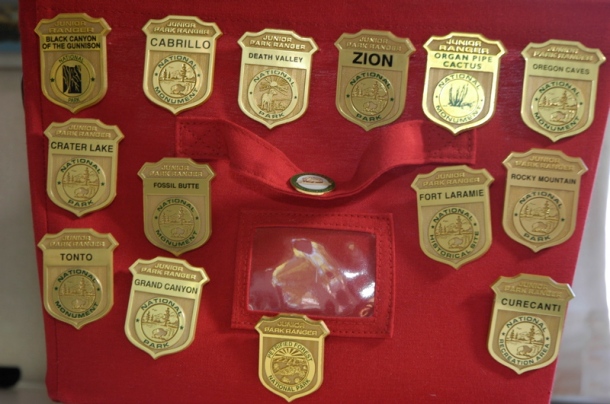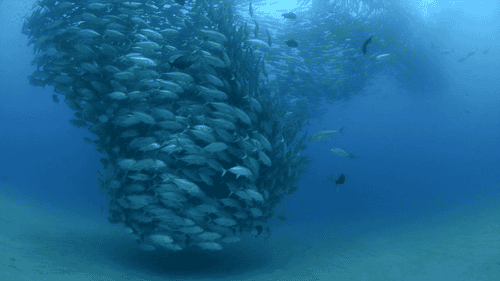Did any of you, when visiting National Parks as a kid, complete those Junior Ranger workbooks? I did. I completed one at every park we lingered in for longer than a bathroom break and a photo-op. You got these activity booklets from the Visitor Center, and when you finished the whole thing you took it back to the Ranger and he or she gave you a pin. A glorious, plastic, Junior Ranger pin. I pinned those things all over my Lisa Frank backpack, or whatever equally lurid equivalent I was carting around at the time.
The point is, I had an unhealthy obsession with those pins. And even more importantly, I was obsessed with the National Parks themselves. What a great way for a kid to experience nature, the nostalgic young adult in me says. Lots of fresh air, trees, and informational ranger-led nature walks. And besides, the scientist in me replies, National Parks are a great way for us to work towards protecting our wildernesses.
I never knew until I started studying marine science that these wilderness preserves aren’t limited to dry ground, but also exist throughout our world’s oceans. Though not exactly equivalent to National Parks, Marine Protected Areas (MPA’s for short) theoretically serve as places where populations of fish, sharks, coral, crustaceans, and other marine organisms can grow unaffected by overfishing or pollution. However, MPA’s have been controversial since their inception. While almost everyone can get behind the idea that we shouldn’t fish everything to extinction, no one wants to have these fish saved in their backyard—at the expense of their livelihoods and their stomachs. Some people say MPA’s are ineffective, while others argue that the issue is that we don’t have enough of them.
A recent study by researchers at the University of Tasmania tried to put an end to this debate by examining 87 MPA’s from around the world. They wanted to see how the numbers, size, and type of fish varied between these areas and non-MPA’s. Not all MPA’s are created equal—one might be the marine Yellowstone, while the other more closely related to the trampled woods behind your high school where kids hung out when they skipped class. Because of this, the team of researchers also looked at how fish fared when MPA’s possessed varying combinations of 5 key factors: (1) no take policies, where fishing isn’t allowed, (2) good enforcement of rules such as the aforementioned no take policy, (3) age of the MPA, (4) size of the MPA, and (5) isolation of the MPA from other areas by deep water or sand.
What they found is somewhat depressing for those of us who dream of someday getting a Junior Ranger pin at an MPA visitor center—unless an MPA had at least 4 out of the 5 key factors, no significant difference in conservation benefit was observed between the MPA and surrounding fished areas. It seems that the presence of a single factor, such as large MPA size, doesn’t do much on its own to protect ecosystems unless it is accompanied by no take polices, isolation, and law enforcement (for example). Knowing too that all the MPA’s together only account for 2% of the world’s oceans, and that only about 5% of MPA’s surveyed possessed all 5 of the conservation factors, we begin to paint a grim picture of MPA success.

Map showing the distribution of the MPA’s examined in this study, as well as the number of key factors (NEOLI attributes) present at each study site. [Edgar et al. 2014]
In light of this study, we now see that MPA’s can help to protect marine ecosystems. However, it also falls upon us to make changes that will lead to effective MPA’s by ensuring that more key factors—size, age, no fishing policies, law enforcement, and isolation—are implemented when designing new MPA’s. It seems now that quality, not quantity, is the name of the game.




I always learn something from your articles, Kelsey. Uncle Larry
LikeLike
Thanks!! I’m glad you’re enjoying them.
LikeLike
So what’s the process to have an area designated as a Marine Protected Area?
LikeLike
To my knowledge, designating a MPA works similarly to the creation of a terrestrial wilderness area–local, state, or federal lawmakers create legislation that sets aside an area of the ocean principally for conservation purposes. This means that activities such as drilling, fishing, and boating might be restricted within these areas, and in some cases these laws are enforced by officials that patrol the MPA.
LikeLike